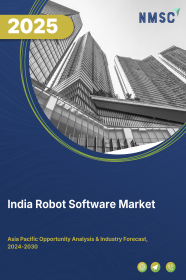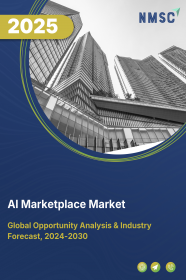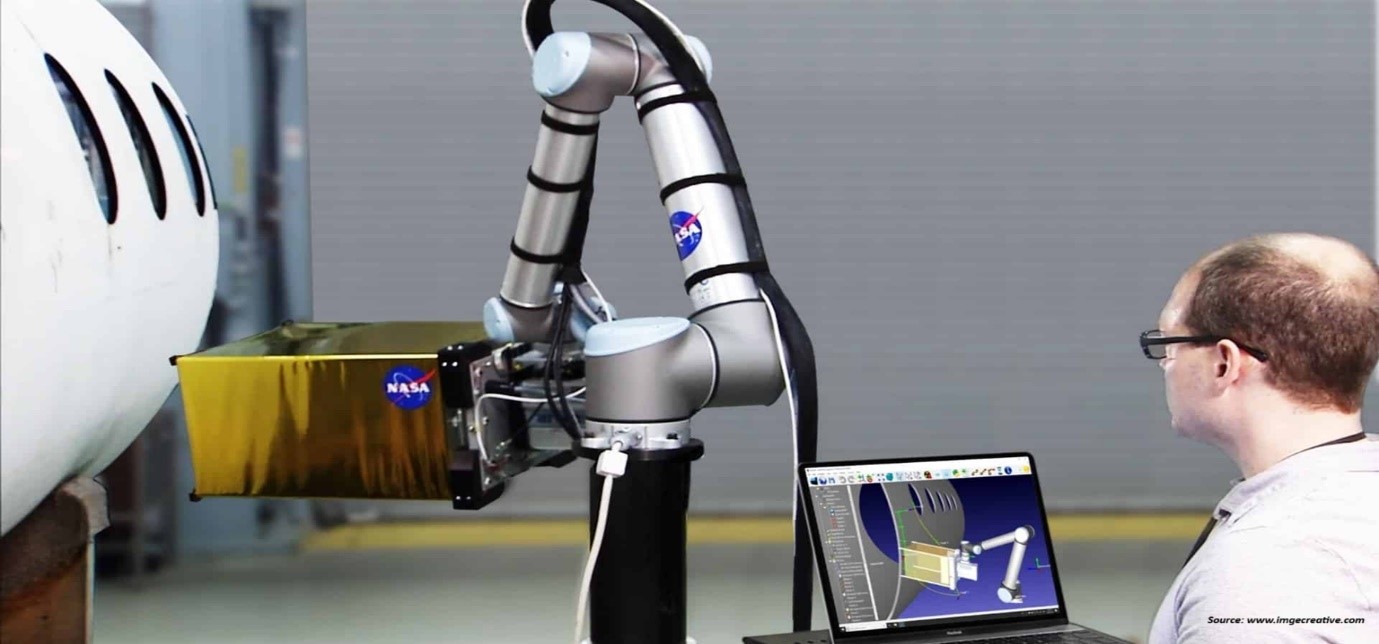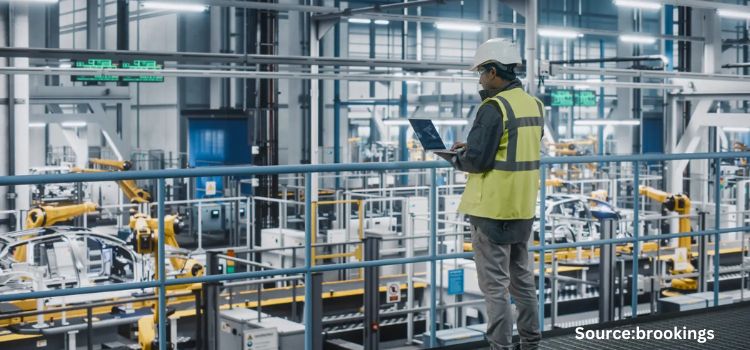
India Robot Software Market by Software Type (Recognition Software, Simulation Software, Predictive Maintenance Software, Communication Management Software, and Data Management and Analysis Software), by Robot Type (Service Robots and Industrial Robots), by Deployment Mode (On-premise and On-demand), by Organization Size (Large Enterprises and Small and Medium-sized Enterprises (SMEs) – Opportunity Analysis and Industry Forecast, 2024–2030
Industry: ICT & Media | Publish Date: 14-Feb-2025 | No of Pages: 126 | No. of Tables: 92 | No. of Figures: 57 | Format: PDF | Report Code : IC2390
US Tariff Impact on India Robot Software Market
Trump Tariffs Are Reshaping Global Business
India Robot Software Market Overview
The India Robot Software Market size was valued at USD 223.4 million in 2023, and is expected to reach USD 1312.3 million by 2030, with a CAGR of 27.7% from 2024 to 2030. Robot software comprises a suite of programs and algorithms designed to oversee and control the operations of robots or robotic systems across various industries such as logistics, manufacturing, entertainment, healthcare, and more.
Its functionality involves several key components. Firstly, it manages and coordinates the movements and behaviors of robots, ensuring precise and efficient task execution by issuing detailed commands to robotic components such as motors and actuators. Additionally, robot software plays a critical role in interpreting data from diverse sensors embedded within robots, including cameras, Light Detection and Ranging (LIDAR) sensors, and tactile sensors, providing essential environmental feedback enabling robots to perceive and understand their surroundings.
An integral aspect of robot software is its ability to make intelligent decisions using artificial intelligence (AI) and machine learning (ML) algorithms. By analyzing data from sensors, adhering to predefined rules, or learning from past experiences, robots can adapt to changing conditions, enabling them to operate autonomously and adjust their actions in real-time. Furthermore, robot software facilitates communication and networking between robots, allowing collaboration for complex tasks or data exchange with a central control system. This interconnectedness enables synchronized operations in industrial environments, leading to enhanced efficiency and productivity.
Growing Focus on Safety and Compliance Propels the India Robot Software Market Trends
The increasing emphasis on safety and compliance serves as a key catalyst driving the growth of the India robot software market. With growing concerns surrounding workplace safety and regulatory adherence, organizations prioritize the adoption of robot software solutions that guarantee the safe and compliant operation of robotic systems.
Robot software plays a pivotal role in implementing essential safety features, risk assessment tools, and compliance frameworks, thereby curtailing the risk of accidents and ensuring conformity with industry regulations and standards. Moreover, as the regulatory landscape evolves and becomes more rigorous, there is a heightened demand for robot software capable of facilitating real-time monitoring, reporting, and documentation of safety and compliance metrics.
By effectively addressing these concerns and offering robust solutions for safe and compliant operations, the increasing focus on safety and compliance fuels the adoption of robot software across various industries, thereby stimulating the robot software market growth.
The Convergence of Industry 4.0 and IoT Drive the India Robot Software Market
The convergence of Industry 4.0 and the Internet of Things (IoT) emerges as a significant driving force behind the expansion of the India robot software market. Industry 4.0, characterized by the integration of digital technologies into manufacturing processes, along with advancements in IoT, has revolutionized industrial automation.
IoT-enabled devices and sensors enable real-time data collection and communication, offering valuable insights into manufacturing operations and enhancing connectivity throughout the production ecosystem. This interconnected infrastructure creates opportunities for robot software solutions to utilize data analytics, predictive maintenance strategies, and adaptive control algorithms, optimizing the performance and efficiency of robots.
Additionally, Industry 4.0 principles prioritize agility, flexibility, and scalability, fueling the demand for robot software solutions that facilitate smooth integration, interoperability, and collaboration within intelligent manufacturing environments. Consequently, the synergies between Industry 4.0 and IoT drive the adoption of robot software, fostering innovation and efficiency in industrial automation processes.
High Initial Investment for Acquiring Robot Hardware Restrain the India Robot Software Market Growth
The considerable upfront investment necessary to acquire robot hardware stands as a significant barrier to the India robot software market growth. Procuring robot hardware involves substantial initial costs, encompassing the purchase of robotic systems, peripherals, and associated equipment.
These expenses can be prohibitive for many organizations, particularly small and medium-sized enterprises (SMEs) or those with constrained budgets. The substantial financial commitment required for robot hardware might deter potential adopters from investing in robot software solutions, despite acknowledging their potential long-term benefits.
Additionally, the high initial investment may extend the return on investment (ROI) period, resulting in longer payback periods and limiting the scalability of robot deployments. Hence, addressing the challenge of high initial investment costs for robot hardware is crucial to facilitating broader adoption and driving the India robot software market growth.
Development of Digital Twins and Simulation Software Creates New Opportunities in the India Robot Software Market
The advent of digital twins and simulation software opens up new avenues in the India robot software market by providing sophisticated tools for modeling, testing, and optimizing robotic systems in the country. Digital twins create virtual replicas of physical robots and their environments, allowing for real-time monitoring, analysis, and predictive maintenance.
Simulation software enables users to simulate diverse scenarios and environments, validating robot software algorithms and refining performance prior to deployment. These technologies offer significant advantages, including reduced development time and costs, enhanced scalability, and improved risk management.
Moreover, digital twins and simulation software facilitate collaborative development and training, enabling stakeholders to iterate and refine robot software solutions more effectively. By furnishing powerful tools for design, testing, and optimization, the emergence of digital twins and simulation software drives innovation and accelerates the adoption of robot software in various industries.
Competitive Landscape
Several key players operating in the India robot software industry include IBM, NVIDIA, ABB Ltd., FANUC, Teradyne, Inc., H2O.ai, Brain Corp, CloudMinds, Clearpath Robotics, and Neurala, Inc. These market players are adopting strategies to maintain their dominance in the market.
India Robot Software Market Key Segments
By Software Type
-
Recognition Software
-
Simulation Software
-
Predictive Maintenance Software
-
Communication Management Software
-
Data Management and Analysis Software
By Robot Type
-
Service Robots
-
Ground
-
Aerial
-
Underwater
-
-
Industrial Robots
-
Traditional Industrial Robots
-
Articulated Robots
-
SCARA Robots
-
Parallel Robots
-
Cartesian Robots
-
Other Robots
-
-
Collaborative Industrial Robots
-
By Deployment Mode
-
On-premise
-
On-demand
By Organization Size
-
Large Enterprises
-
Small and Medium-sized Enterprises (SMEs)
By Industry Vertical
-
Banking, Financial Services, and Insurance (BFSI)
-
Automotive
-
Retail and eCommerce
-
Aerospace & Defense
-
Healthcare and Life Sciences
-
Transportation and Logistics
-
Manufacturing
-
Telecommunications and IT
-
Academia and Research
-
Media & Entertainment
-
Others
REPORT SCOPE AND SEGMENTATION:
|
Parameters |
Details |
|
Market Size in 2023 |
USD 223.4 Million |
|
Revenue Forecast in 2030 |
USD 1312.3 Million |
|
Growth Rate |
CAGR of 27.7% from 2024 to 2030 |
|
Analysis Period |
2023–2030 |
|
Base Year Considered |
2023 |
|
Forecast Period |
2024–2030 |
|
Market Size Estimation |
Million (USD) |
|
Growth Factors |
|
|
Companies Profiled |
10 |
|
Market Share |
Available for 10 companies |
|
Customization Scope |
Free customization (equivalent up to 80 working hours of analysts) after purchase. Addition or alteration to country, regional, and segment scope. |
|
Pricing and Purchase Options |
Avail customized purchase options to meet your exact research needs. |
KEY PLAYERS
-
IBM
-
NVIDIA
-
ABB Ltd.
-
FANUC
-
Teradyne, Inc.
-
H2O.ai
-
Brain Corp
-
CloudMinds
-
Clearpath Robotics
-
Neurala, Inc.

















 Speak to Our Analyst
Speak to Our Analyst





















